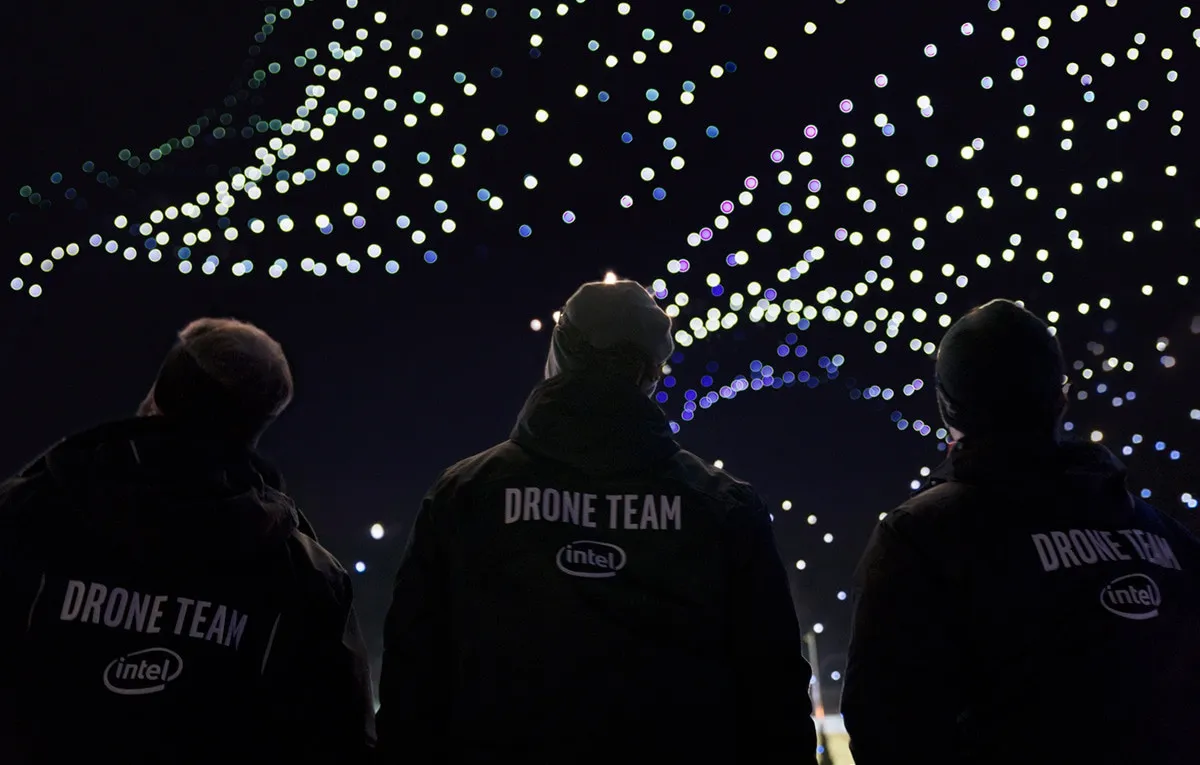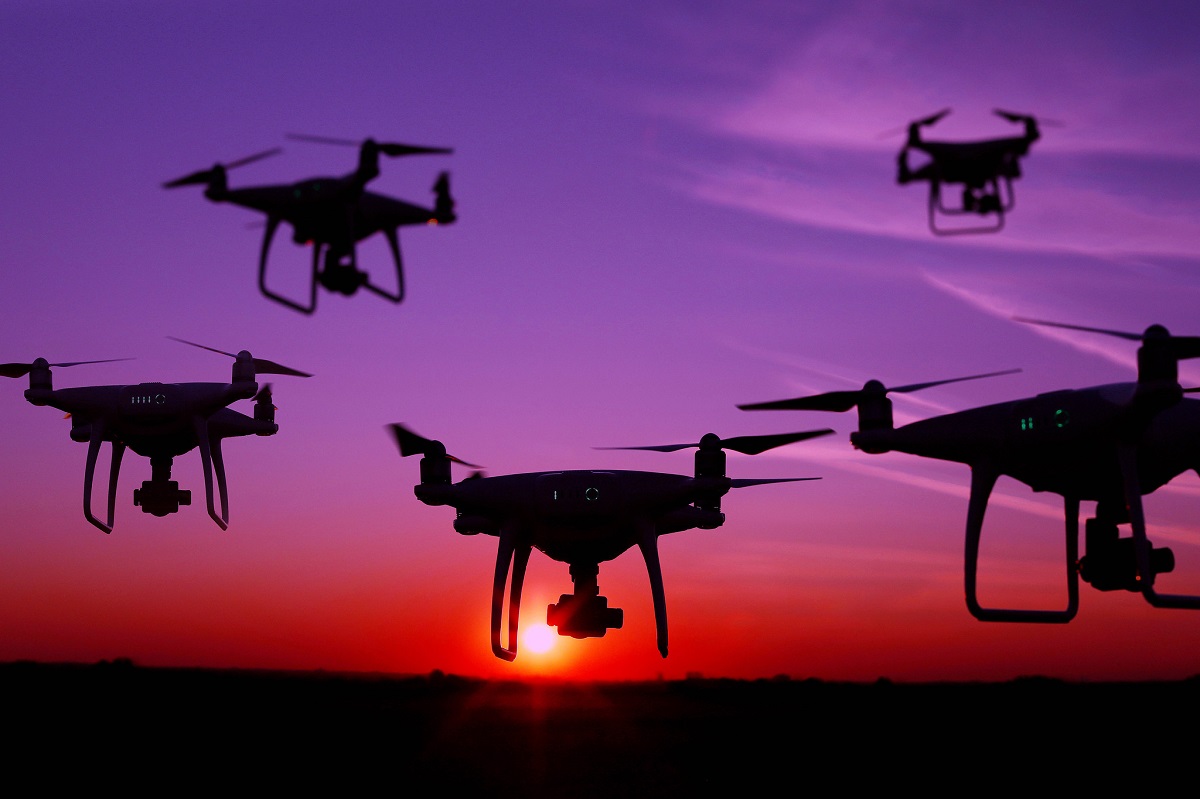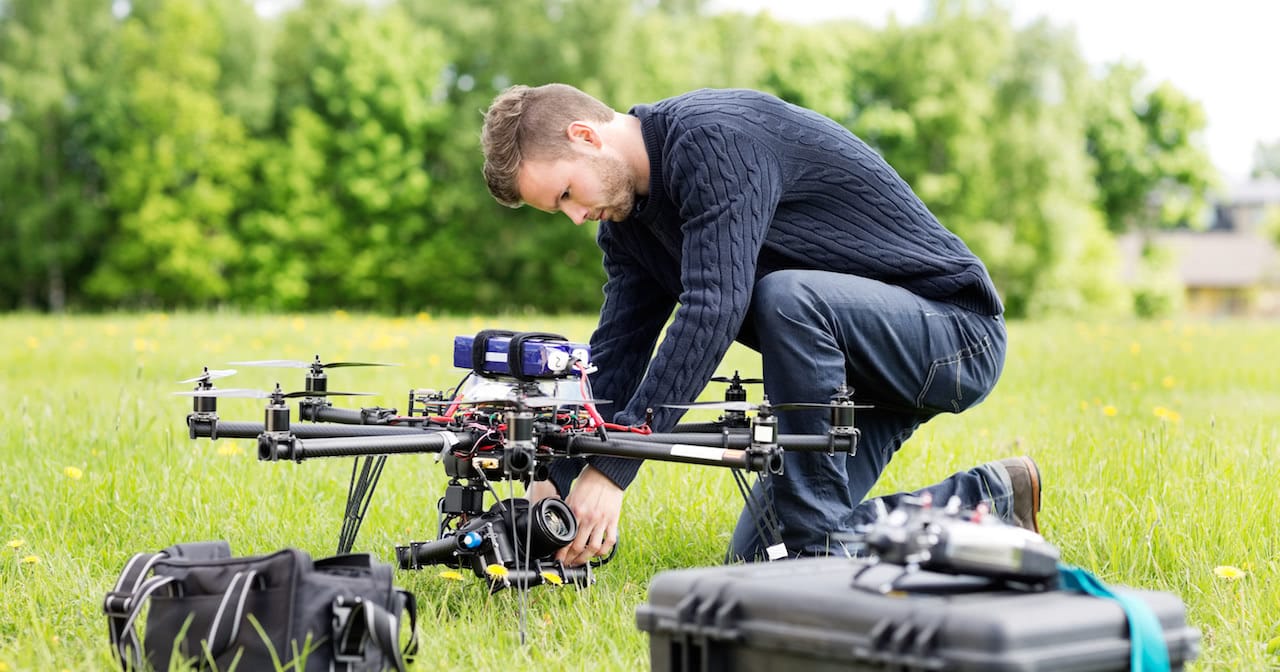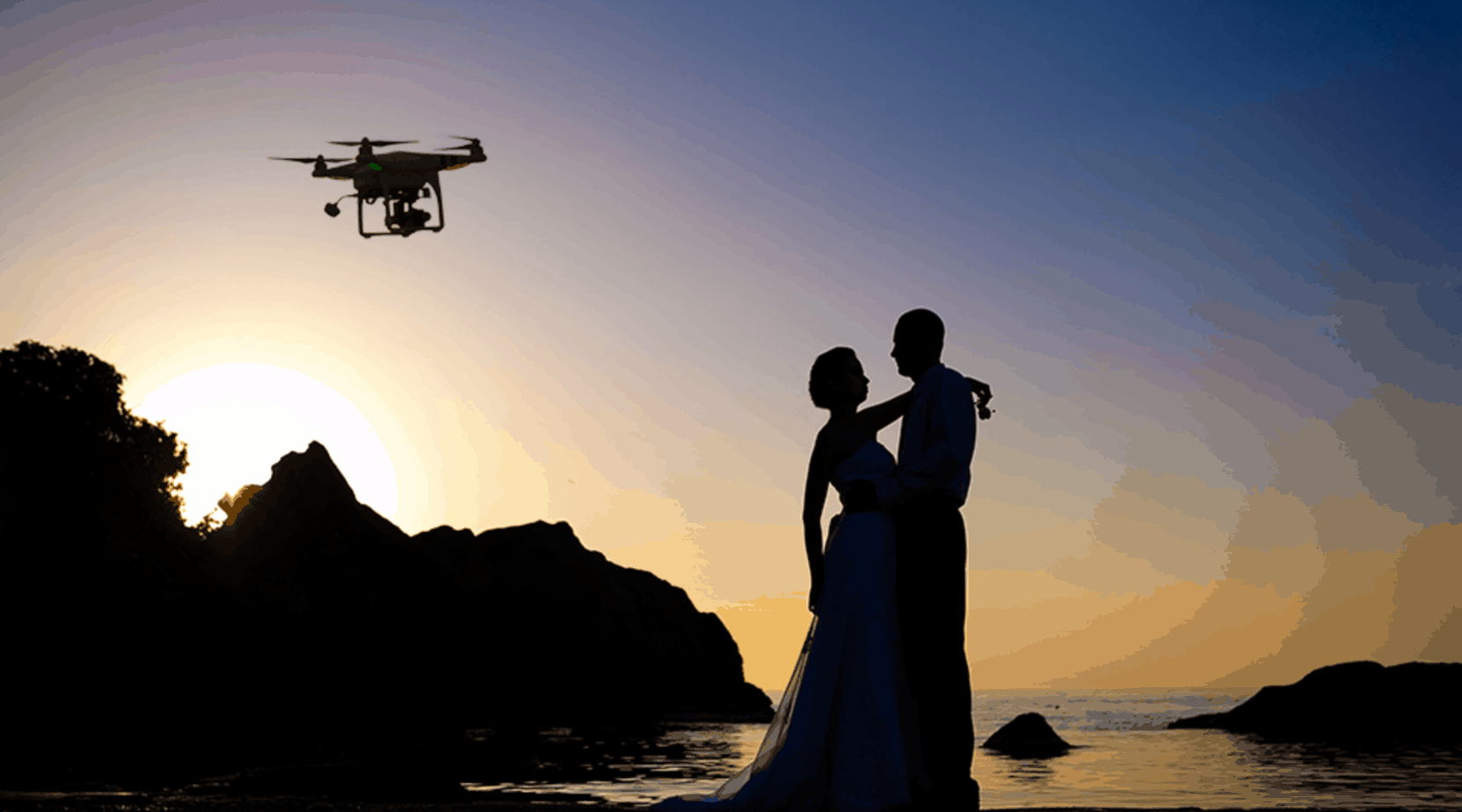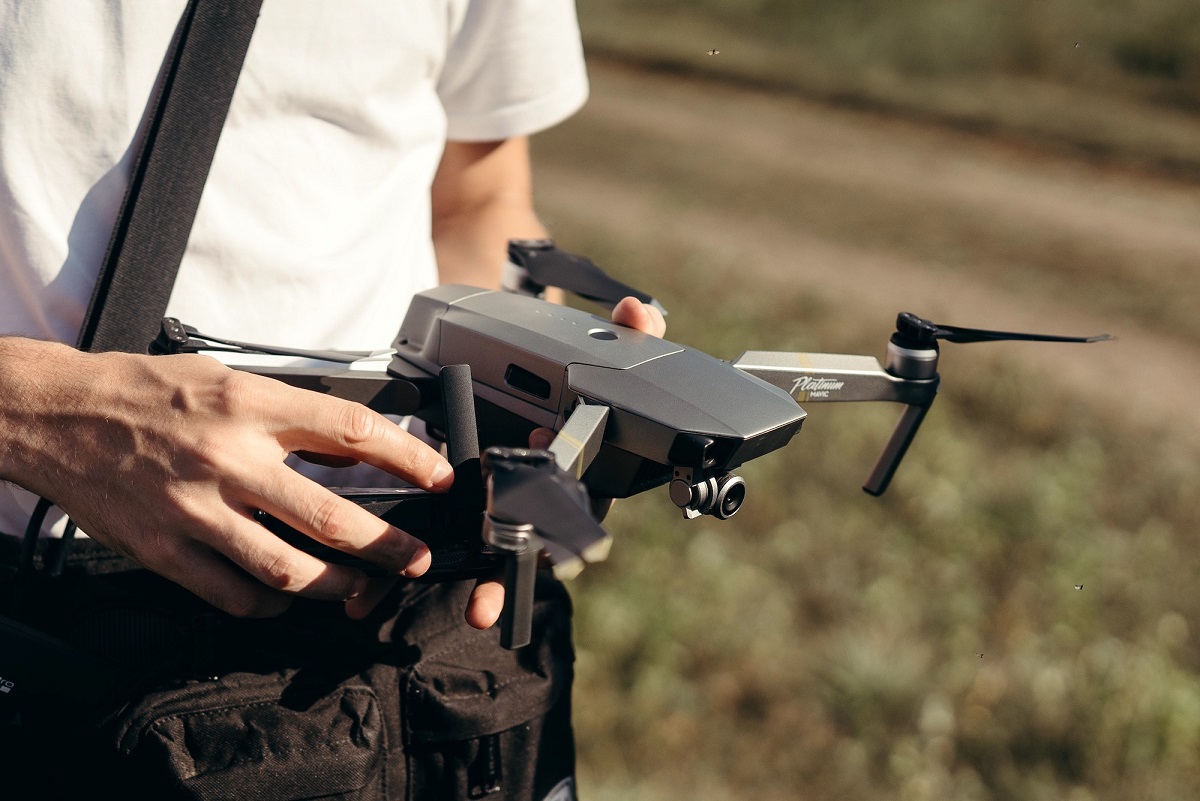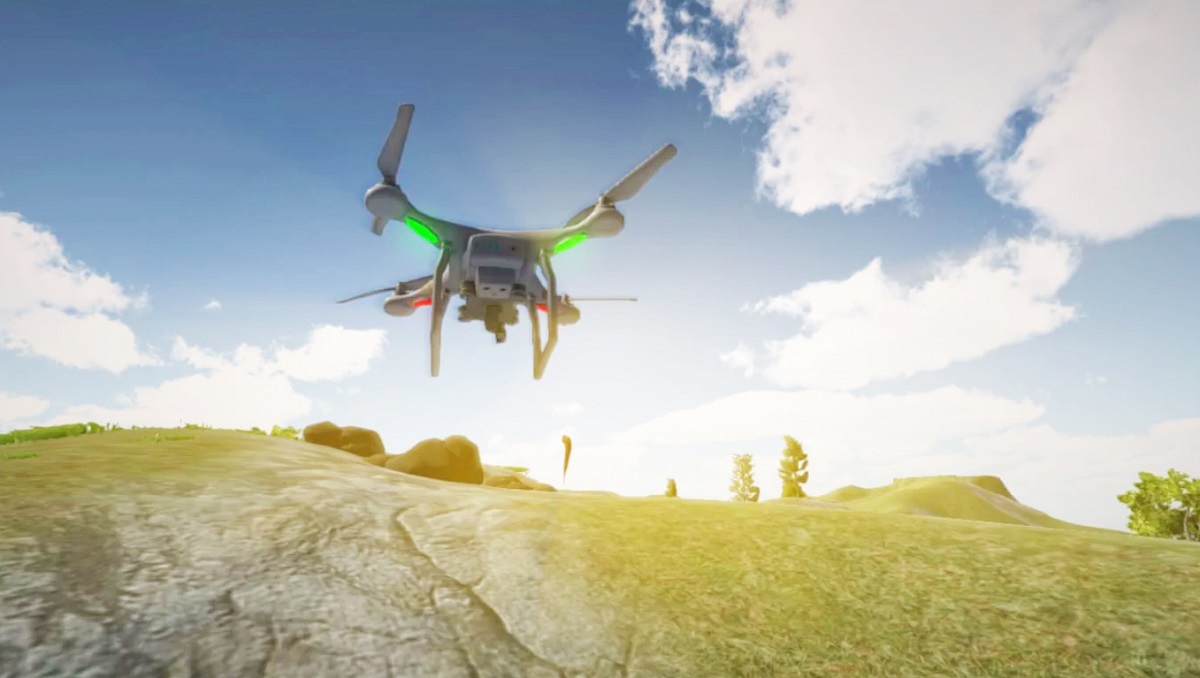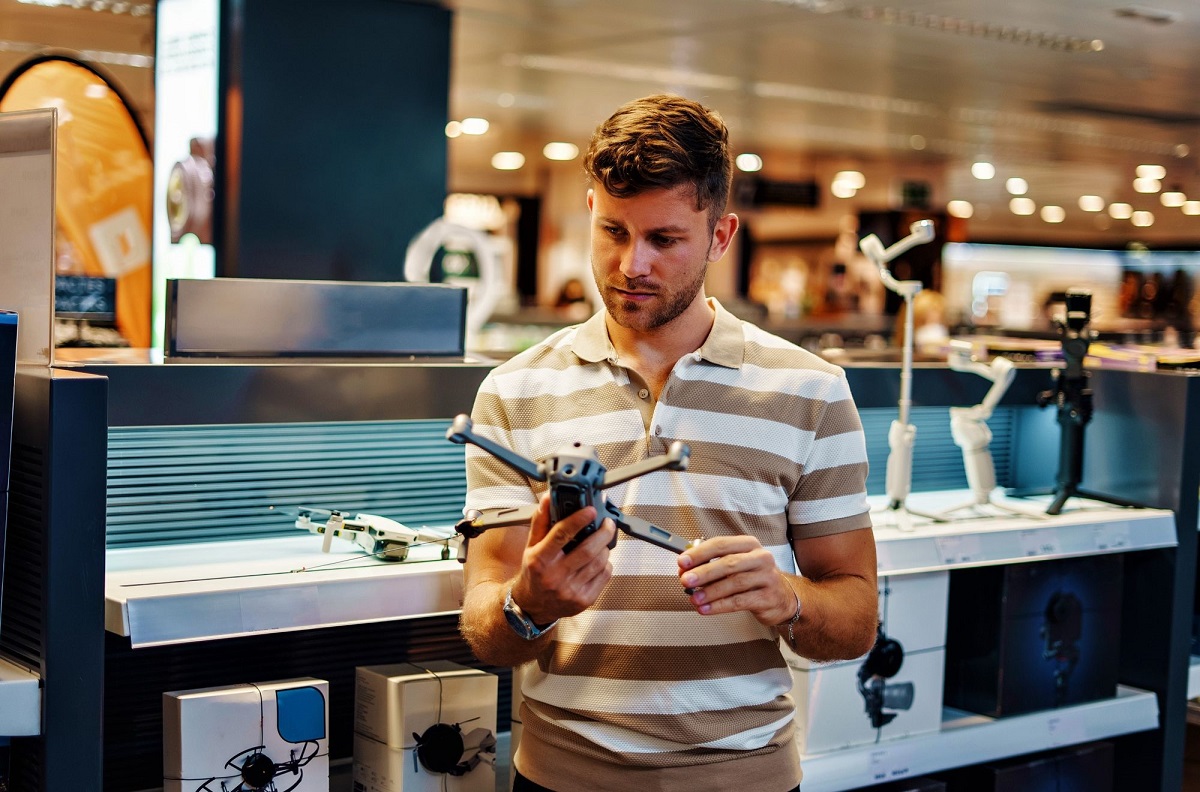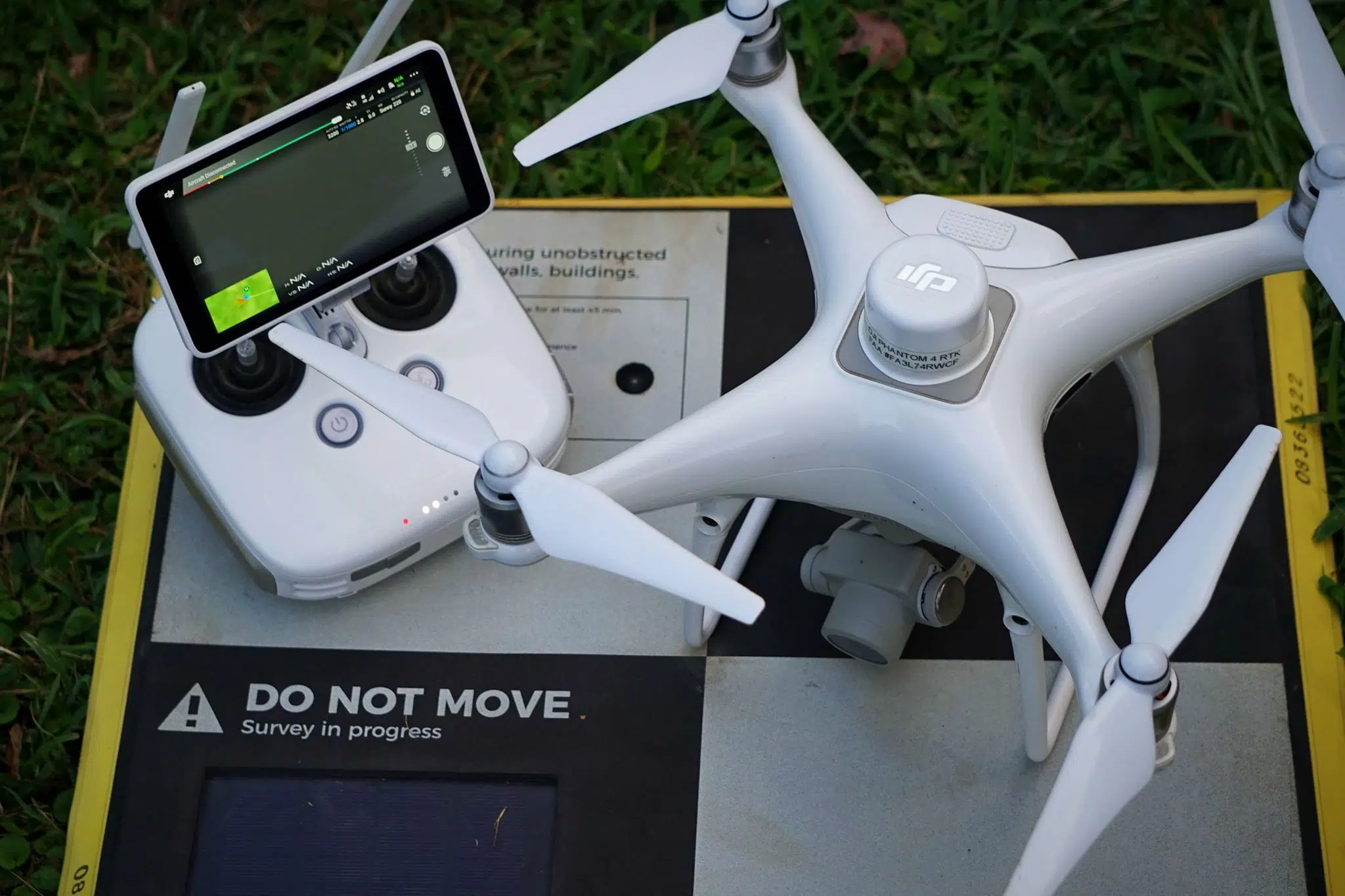Introduction
Drone shows have become a captivating spectacle that combines technology, artistry, and precision. These shows feature a swarm of drones flying in synchronized formations and creating stunning aerial displays against the night sky. Whether it’s a fireworks replacement on New Year’s Eve or a mesmerizing light show during a music concert, drone shows have taken the world by storm.
The concept of using drones for entertainment purposes is relatively new but has quickly gained popularity due to their uniqueness and ability to create breathtaking visuals. These shows have become a favorite amongst audiences of all ages, as they offer a glimpse into the future of entertainment and technology.
In this article, we will delve into the world of drone shows, exploring the history, technology, choreography, safety measures, challenges, and future of this mesmerizing art form. Let’s take a closer look at how these captivating displays come to life and what makes them an unforgettable experience.
History of Drone Shows
The concept of using drones for entertainment purposes originated in the early 2000s when companies started experimenting with the idea of choreographing drone movements to create artistic displays. However, it was not until recent years that drone shows gained significant momentum and became a popular form of entertainment.
One of the earliest notable drone displays took place during the 2012 London Olympics opening ceremony, where 30 illuminated drones flew in formation, forming the Olympic rings in the night sky. This captivating performance marked the beginning of a new era in entertainment.
The following years witnessed an exponential growth in the popularity of drone shows, with companies such as Intel and DJI leading the way in developing advanced technologies for drone swarm control and aerial performances. Intel made headlines in 2016 when they set a Guinness World Record for the “most unmanned aerial vehicles airborne simultaneously” with a stunning drone light show featuring 500 drones.
Since then, drone shows have become a regular feature at major events and celebrations around the world. They have been used in Super Bowl halftime shows, music concerts, theme parks, and even as a replacement for traditional fireworks displays. The synchronized movements and intricate formations created by hundreds of drones have captured the imagination of audiences and brought a new dimension to live performances.
As the technology continues to advance, drone shows are becoming more accessible and affordable for a wider range of events and venues. Smaller drones are being developed that can be easily controlled and programmed, allowing even small-scale productions to incorporate drone displays into their repertoire.
The history of drone shows is still being written, with new innovations and advancements pushing the boundaries of what can be achieved. As we move forward, it is exciting to see how this captivating form of entertainment will continue to evolve and amaze audiences around the globe.
The Technology Behind Drone Shows
Behind the mesmerizing displays of drone shows lies a complex array of technology that makes it all possible. From the drones themselves to the swarm control systems and intricate choreography, multiple elements come together to create spectacular aerial performances.
At the heart of any drone show are the drones themselves. These unmanned aerial vehicles are meticulously designed for precision and maneuverability. They are equipped with advanced flight control systems, GPS navigation, and high-resolution cameras or LED lights for visual effects.
The drones used in shows are typically lightweight and agile, capable of performing intricate movements with precision and accuracy. They can be programmed to follow specific flight paths, execute flips and spins, and even hover in mid-air to create stunning visual patterns.
However, the true magic of drone shows lies in the swarm control systems. These sophisticated technologies enable a large number of drones to fly in synchronized formations, creating breathtaking displays. Swarm control systems rely on a combination of wireless communication protocols, GPS tracking, and advanced algorithms to ensure that each drone moves in perfect harmony with the others.
Through precise coordination, the drones are able to maintain a safe distance from each other and perform complex maneuvers without any collisions. The swarm control system also accounts for environmental factors such as wind speed and weather conditions to ensure optimal flight performance.
In addition to the technical aspects of drone shows, choreography plays a crucial role in creating captivating performances. Skilled professionals meticulously plan and choreograph the movements of the drones to synchronize with music or other elements of the show. Each drone becomes a pixel in the sky, contributing to an awe-inspiring visual spectacle.
As technology continues to advance, new features and capabilities are being added to further enhance the drone show experience. Some companies are experimenting with augmented reality (AR) and virtual reality (VR) integration, allowing audiences to have an immersive viewing experience.
The technology behind drone shows is constantly evolving, pushing the boundaries of what is possible. Through the combination of advanced drone technology, swarm control systems, and creative choreography, these shows continue to captivate and delight audiences worldwide.
Drone Swarm Control Systems
For a dazzling drone show, it is essential to have a robust drone swarm control system in place. These systems enable the synchronized movements and intricate patterns that make the aerial displays so captivating. Let’s take a closer look at how drone swarm control systems work.
Drone swarm control systems rely on a combination of hardware and software to facilitate communication and coordination among the individual drones. Wireless communication protocols, such as Wi-Fi or radio signals, are used to establish a connection between the central control system and the drones.
The central control system serves as the “brain” of the operation, responsible for orchestrating the movements of the drones. It receives commands from the operator or a pre-programmed sequence and relays them to the drones. These commands can include flight paths, altitudes, speeds, and specific maneuvers.
In addition to communication, swarm control systems use GPS technology to track the position and altitude of each drone in real-time. This GPS data allows the system to ensure that the drones maintain a safe distance from each other, avoiding collisions and maintaining formation.
Advanced algorithms are employed to calculate the optimal flight paths and drone positions, taking into account factors like wind speed and weather conditions. These algorithms allow for precise coordination of drone movements, resulting in seamless synchronization and visually stunning displays.
Some drone swarm control systems also incorporate artificial intelligence (AI) capabilities. AI algorithms can analyze data in real-time and make adjustments to the drone movements, ensuring smooth transitions and adapting to dynamic conditions as the show progresses.
It is worth noting that redundancy measures are often implemented in drone swarm control systems to ensure reliability and safety. Backup systems and fail-safe mechanisms are put in place to handle any unforeseen issues or technical failures. These measures are crucial to maintaining the safety of the drones, the audience, and the surrounding environment.
As drone technology continues to advance, so does the development of drone swarm control systems. Innovations in swarm intelligence, machine learning, and sensor technology are expanding the capabilities of these systems, allowing for even more complex and visually stunning performances.
Drone swarm control systems are a vital component in creating the mesmerizing displays that have become synonymous with drone shows. The synchronization, precision, and coordination achieved through these systems bring an element of artistry and innovation to the world of entertainment.
Choreography and Animation
One of the key elements that make drone shows so captivating is the careful choreography and animation of the drones. The movements and formations created by the drones bring the aerial displays to life, transforming the night sky into a mesmerizing canvas. Let’s explore the art behind the choreography and animation of drone shows.
Choreographing a drone show involves meticulously planning and designing the movements of the individual drones to create synchronized patterns and formations. Skilled professionals work alongside software engineers to create a choreography that seamlessly integrates with the music or theme of the show.
Using specialized software, the choreographers assign specific flight paths, altitudes, speeds, and maneuvers to each drone. These instructions are stored in the drone swarm control system, which then communicates the commands to the individual drones during the performance.
The drones can execute a wide range of maneuvers, including flips, spins, and precise adjustments in position. These movements are carefully timed and coordinated to create dynamic and visually captivating displays. Each drone becomes a pixel in the sky, forming intricate shapes, logos, or messages.
Animation plays a crucial role in enhancing the visual spectacle of drone shows. By integrating LED lights or other lighting effects into the drones, the choreographers can create stunning visual patterns and illusions. The drones can change colors, emit specific light patterns, and even simulate motion by rapidly switching between different formations.
One of the advantages of using drones for choreography and animation is the flexibility they offer. Unlike traditional fireworks or pyrotechnics, drones can be programmed to create complex and precise movements repeatedly. Choreographers have the freedom to experiment with different formations and sequences, ensuring a unique and memorable experience for each show.
The combination of music and choreography is essential in creating an immersive and emotional experience for the audience. The changing tempo and rhythm of the music guide the movements of the drones, adding a dynamic element to the visual display. The synchronized dance of the drones and the accompanying music evoke a sense of wonder and awe.
As technology continues to advance, the possibilities for choreography and animation in drone shows are expanding. Virtual reality (VR) and augmented reality (AR) integration are being explored, allowing for even more interactive and immersive experiences. With these advancements, drone shows are evolving into multi-sensory spectacles, pushing the boundaries of entertainment.
Choreography and animation are essential ingredients in creating the breathtaking displays that have made drone shows a global phenomenon. The careful planning, precision movements, and creative vision of the choreographers and animators ensure that each show is a unique and unforgettable experience for audiences around the world.
Safety Measures in Drone Shows
Ensuring the safety of drone shows is of paramount importance to protect not only the drones themselves but also the audience and the surrounding environment. Here, we will explore the safety measures implemented to minimize risks and ensure a secure and enjoyable experience for everyone involved.
One of the primary safety considerations in drone shows is collision avoidance. With multiple drones flying in close proximity, the risk of collision is a crucial concern. To mitigate this, drone swarm control systems are equipped with collision detection and avoidance technology. Sensors and advanced algorithms are employed to detect and predict the trajectories of other drones, allowing for real-time adjustments to ensure safe distances are maintained.
Furthermore, drone operators must conduct thorough risk assessments prior to each performance. They need to identify potential hazards such as tall structures, power lines, or restricted airspace in the vicinity. Adherence to local regulations and securing appropriate permissions from aviation authorities is essential to ensure compliance and avoid any potential conflicts or accidents.
In addition, training and certification of drone operators play a crucial role in maintaining safety in drone shows. Operators must be well-versed in drone operation, swarm control systems, emergency procedures, and safety protocols. Comprehensive training programs and certifications help ensure that operators have the necessary skills and knowledge to handle any potential challenges during the show.
Emergency contingency plans are also prepared to address any unforeseen circumstances or technical malfunctions. Operators and event organizers establish protocols for dealing with situations such as drone failures, loss of communication, or adverse weather conditions. These plans outline procedures for safely grounding or recovering the drones and managing any potential risks to the audience and surrounding areas.
Public safety and crowd control are paramount considerations in drone shows. Organizers establish clear boundaries for the audience and implement measures to prevent unauthorized access to the performance area. Safety personnel are stationed strategically to manage the crowd and respond to any emergencies effectively.
Moreover, drone shows must comply with noise regulations, especially in residential areas or venues close to sensitive locations. Efforts are made to minimize the noise generated by the drones and ensure that it remains within permissible limits, providing an enjoyable experience for the audience without causing disruption to nearby communities.
Regular maintenance and inspection of drones are essential to ensure their proper functioning. Pre-flight checks and routine maintenance procedures help identify any potential issues early on and prevent operational failures during the show. Regular software updates and upgrades also keep the drones equipped with the latest safety features and performance enhancements.
By implementing these safety measures, drone shows can be conducted with confidence and provide a captivating experience while prioritizing the well-being of all involved. Responsible planning, adherence to regulations, thorough training, and ongoing maintenance ensure that drone shows remain a safe and thrilling form of entertainment.
Challenges in Drone Shows
While drone shows have gained immense popularity and captivated audiences worldwide, they are not without their challenges. From technical complexities to regulatory constraints, several factors pose hurdles to the successful execution of drone shows. Let’s explore some of the key challenges faced in this unique form of entertainment.
One of the primary challenges is the complexity of coordinating a large number of drones. Ensuring precise timing, synchronized movements, and maintaining safe distances between the drones require sophisticated swarm control systems and precise programming. The choreography of the drones needs to be meticulously planned to achieve seamless coordination and avoid collisions.
Weather conditions can also pose challenges in outdoor drone shows. High winds, rain, or other adverse weather conditions can affect the stability and flight performance of the drones. It becomes crucial to monitor meteorological conditions and have contingency plans in place to either delay or cancel the show if necessary. Safety concerns for both the drones and the audience may override the desire to proceed with the performance.
Moreover, logistical considerations can be challenging for drone shows. Setting up the necessary infrastructure, including launch pads, charging stations, and communication systems, requires careful planning and coordination. Transporting the drones and equipment to different venues, especially for international shows, adds another layer of complexity that must be managed efficiently.
Regulatory constraints can also impact the execution of drone shows. Different countries and regions have their own rules and regulations regarding drone operations, airspace restrictions, and safety requirements. Obtaining the necessary permits and authorizations to conduct drone shows in certain locations can be time-consuming and require close collaboration with aviation authorities and local authorities.
Drone battery life is another challenge that operators must manage. Most drones have limited flight times, typically ranging from 15 to 30 minutes. This can present difficulties in longer shows or performances that require multiple takes. Efficient battery management, including having spare batteries readily available, is crucial to ensure uninterrupted performances.
Lastly, the public perception and acceptance of drones can also pose challenges. While many people find drone shows fascinating and innovative, there are others who may have concerns about privacy, noise, or safety. Addressing these concerns through education, enhanced safety measures, and transparent communication is crucial to build trust and foster acceptance of drone shows.
Despite these challenges, the rapid advancements in drone technology, the growing expertise of operators, and the recognition of the unique entertainment value of drone shows are driving the industry forward. Sustained innovation and collaboration among stakeholders will help overcome these challenges and pave the way for even more spectacular drone performances in the future.
Applications and Future of Drone Shows
Drone shows have captured the imagination of audiences around the world and continue to expand their reach beyond traditional entertainment events. The applications of drone shows are diverse, and the future of this unique art form looks promising. Let’s explore the various applications and the exciting possibilities that lie ahead.
One of the most common applications of drone shows is in live events such as music concerts, sports events, and corporate gatherings. Drone shows can replace traditional fireworks displays, offering a greener and more visually captivating alternative. The synchronized movements and vibrant light displays add an element of excitement and awe to these events, creating unforgettable experiences for the audience.
Drone shows have also found their way into advertising and marketing campaigns. Companies are increasingly utilizing drone shows to create visually stunning and attention-grabbing displays to promote their products or brands. By incorporating logos, messages, and dynamic formations, drone shows provide a unique and innovative platform for marketing initiatives.
Another potential application of drone shows is in the realm of education and storytelling. Drones can be programmed to create animated sequences in the sky, bringing stories and concepts to life in an immersive and engaging way. Educational institutions can incorporate drone shows into their curriculum to enhance learning experiences and make complex subjects more accessible and interesting.
The future of drone shows holds even more exciting possibilities. Technological advancements are pushing the boundaries of what drones can achieve. We can anticipate further improvements in drone capabilities, including increased flight times, better stability in adverse weather conditions, and enhanced payload capacity for additional visual effects.
Augmented reality (AR) and virtual reality (VR) integration is also poised to revolutionize the drone show experience. Imagine donning a VR headset and being transported into a virtual world where drones dance and twirl around you, creating an immersive and interactive performance. AR applications could allow audiences to view additional virtual elements overlaying the real-world drone displays, enhancing the overall visual experience.
Drone swarm technology is also evolving, enabling larger numbers of drones to synchronize their movements more seamlessly. This opens up possibilities for even grander and more complex performances, with thousands of drones performing intricately choreographed routines in the sky.
Furthermore, advancements in AI algorithms and machine-learning capabilities will enable drones to adapt and respond dynamically to changing conditions during the show. Real-time adjustments can be made to the choreography or flight patterns to optimize the visual impact and ensure a flawless performance.
As the acceptance and popularity of drone shows continue to grow, we can expect to see them becoming more accessible and affordable for a wider range of events and venues. Smaller-scale productions, such as local festivals or community celebrations, will have the opportunity to incorporate drone shows into their programs, bringing this captivating technology closer to people’s everyday lives.
With limitless creative possibilities and ongoing technological advancements, the future of drone shows is incredibly bright. These aerial spectacles will continue to mesmerize audiences and push the boundaries of entertainment, offering a unique blend of artistry, innovation, and technological marvels.
Conclusion
Drone shows have revolutionized the world of entertainment, combining technology and artistry to create breathtaking aerial displays. From their humble beginnings to becoming a global phenomenon, drone shows have captivated audiences with their synchronized movements and stunning visual effects.
Throughout history, drone shows have evolved alongside advancements in technology and creative ingenuity. The development of drone swarm control systems, choreography techniques, and safety measures has paved the way for increasingly complex and awe-inspiring performances.
These shows have found applications in a range of events and industries, from live concerts and sports events to marketing campaigns and educational initiatives. The versatility and visual impact of drone shows have made them a favorite among audiences of all ages, bringing a sense of wonder and excitement to every performance.
Looking into the future, the potential for drone shows continues to expand. Technological advancements in drone capabilities, augmented and virtual reality integration, and artificial intelligence algorithms will push the boundaries and enable even more incredible displays. Smaller-scale productions will also have the opportunity to incorporate drone shows into their events, making this captivating art form more accessible to a wider audience.
However, as this industry grows, challenges such as regulatory constraints, weather conditions, and logistical considerations need to be navigated carefully. The safety of both the drones and the audience remains a top priority, and ongoing innovation and collaboration among stakeholders will be crucial to address these challenges effectively.
Despite the complexities, drone shows are here to stay, captivating minds and transcending traditional forms of entertainment. They represent the harmonious convergence of technology, artistry, and human creativity. With their ability to transform the night sky into a mesmerizing canvas, drone shows continue to push the boundaries of what is possible, inspiring awe and imagination.
As we eagerly anticipate the future of drone shows, we can be certain that they will continue to mesmerize audiences, evolve in terms of technological advancements, and leave a lasting impression on the world of entertainment for years to come.







